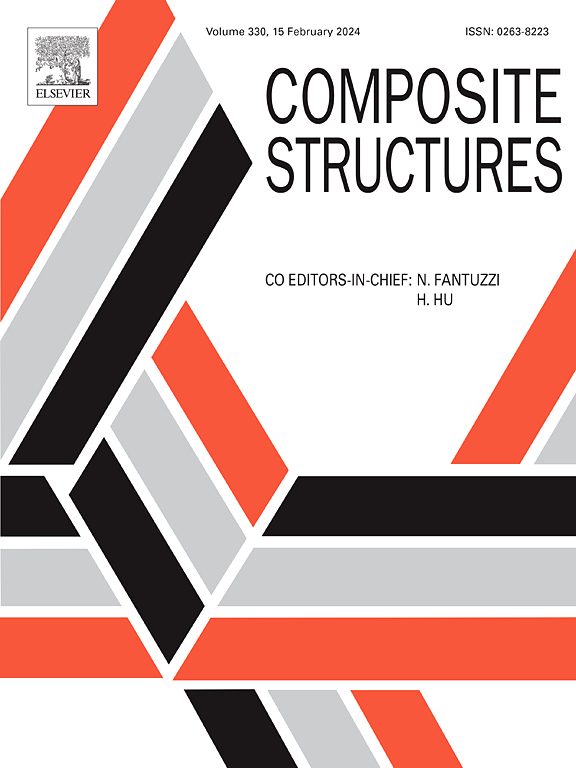Effects of shear connection methods on the performance of UHPFRC-NC hybrid beams with U-shaped GFRP stay-in-place formworks
IF 6.3
2区 材料科学
Q1 MATERIALS SCIENCE, COMPOSITES
引用次数: 0
Abstract
This paper investigates the effects of shear connection methods on the performance of Ultra-high performance fiber reinforced concrete (UHPFRC)-normal concrete (NC) hybrid beams with U-shaped glass fiber-reinforced polymer (GFRP) stay-in-place (SIP) formworks. A total of 21 beams were tested under three-point bending to evaluate their load capacity, failure mechanisms, strain evolution, and cost performance. The specimens included 15 hybrid beams with various shear connection methods—resin-bonding, resin-bonding plus I-shaped GFRP profiles, and resin-bonding plus steel bolts at different spacings—as well as six control beams without SIP formworks for comparison. The complex microscale failure mechanisms were visualized through μXCT scanning. Results indicated that GFRP connectors demonstrated the highest bonding performance and load capacity among all connection methods, while steel bolt connectors provided the best post-failure ductility. The incorporation of SIP formworks significantly enhanced the structural performance of the hybrid beams, maximizing the utilization of UHPFRC’s high compressive strength. Compared to traditional reinforced UHPFRC beams, the hybrid beams achieved 22.7% higher peak loads while reducing UHPFRC usage by 63.2%. Cost effective analysis revealed that hybrid beams with GFRP connectors exhibit the best cost performance among different shear connection methods, with 68.2% higher than that of traditional reinforced UHPFRC beams.
求助全文
约1分钟内获得全文
求助全文
来源期刊

Composite Structures
工程技术-材料科学:复合
CiteScore
12.00
自引率
12.70%
发文量
1246
审稿时长
78 days
期刊介绍:
The past few decades have seen outstanding advances in the use of composite materials in structural applications. There can be little doubt that, within engineering circles, composites have revolutionised traditional design concepts and made possible an unparalleled range of new and exciting possibilities as viable materials for construction. Composite Structures, an International Journal, disseminates knowledge between users, manufacturers, designers and researchers involved in structures or structural components manufactured using composite materials.
The journal publishes papers which contribute to knowledge in the use of composite materials in engineering structures. Papers deal with design, research and development studies, experimental investigations, theoretical analysis and fabrication techniques relevant to the application of composites in load-bearing components for assemblies, ranging from individual components such as plates and shells to complete composite structures.
 求助内容:
求助内容: 应助结果提醒方式:
应助结果提醒方式:


